5/31/2023
| Dr. Klaus Reithmayer
Choosing the right glass electrode | Choosing the suitable reference electrode | Choosing the diaphragm
For successful pH measurement, the selection of the appropriate pH electrode is very important. The pH electrode influences the measurement result. But which pH electrode is best suited for which application and guarantees an optimal result for the pH measurement?
In this article, our pH expert explains the following points:
- The choice of the suitable glass electrode
- The choice of the suitable reference electrode
- The choice of the diaphragm
- The right pH electrode for your application
There are many pH electrodes for a wide variety of applications. The same basic questions will always apply:
What sample am I measuring and with what precision?
This results in a list of criteria that determine the selection:
- Consistency of the sample: liquid, semi-solid, emulsion or suspension
- Chemical composition: aqueous, semi-aqueous, anhydrous, electrode poisons (sulfides, etc.) or other aggressive media (hydrogen fluoride, strong acids or bases)
- Temperature: room temperature, high temperatures, low temperatures
- Pressure (usually only process chemistry)
- Place of measurement: laboratory, mobile or stationary in processes, special accessories are required depending on the application
Choosing the right glass electrode
Glass electrodes exist for various applications, and their glasses differ not only in shape but also in composition. The shape often determines the match to the physical properties of the sample, for example in puncture or surface measurements, which are best accomplished with a spear or a flat membrane or, in the case of small vessels, microelectrodes with a small diameter are used.
The second parameter is the chemical composition of the sample, e.g., there are glasses for high basic load.
The third parameter is the temperature, e.g., measurement in cold samples below 0 °C requires special glass, because the resistance of ordinary pH glass becomes too high.
Choosing a suitable reference electrode
Just as the glass electrode requires an appropriate specification with regard to the measurement, so does the reference electrode and the associated diaphragm, which is joined by a connecting piece between the measurement medium and the glass electrode.
A distinction is made in reference systems between liquid-filled electrodes (usually 3 mol/L KCl), gel electrolytes and polymer electrolytes.
Liquid-filled electrodes have either a ceramic or a platinum wire diaphragm, sometimes also a variable annular gap/ground diaphragm. They are characterized by fast response and high precision, as good electrolyte flow provides a stable signal even in difficult media. They are often found in the laboratory, occasionally in stationary applications with special devices to replace the electrolyte. These electrodes require a certain amount of maintenance, as the electrolyte must be replenished from time to time.
With gel electrodes, there is no need for this effort; they cannot be refilled. Here, a ceramic or a fiber diaphragm can be considered as a diaphragm. They are typically not as fast in response time, the main focus is on low-maintenance operation. They are mainly used in mobile measurement, but also in the laboratory. Special pressurized gel electrodes are also used in process measurement. When the gel supply is used up, the electrode is disposed of.
Electrodes with a polymer electrolyte are used in the laboratory, in the field, and especially in process applications. Their characteristic feature is that they do not require a diaphragm. The required potassium chloride is embedded in a water-insoluble polymer matrix. This results in an open connection to the medium, which is realized via holes in the shaft or an annular gap diaphragm, depending on the design.
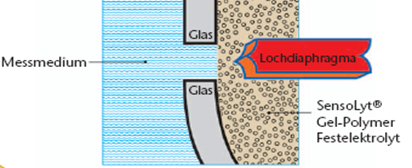
They are largely insensitive to adhering contaminants: These can – if necessary – be removed with a soft brush. Other properties include high resistance to high pressures and temperatures, particularly in the process sector, but their insensitivity to suspended solids etc. is also used in wastewater applications.
In the laboratory they are often used as insertion electrodes for foodstuffs. Polymer electrodes require little maintenance, and it is not possible to refill the polymer.
Choosing the diaphragm
This small and often inconspicuous component is essential for the operation of the electrode. It is directly related to the reference system used.
Liquid-filled electrodes usually have the ceramic or platinum wire diaphragms described above. The ceramic diaphragms consist of a porous ceramic frit that has some permeability to solutions and are placed in the shaft.
The platinum wire diaphragm uses the capillary effect to make good contact with the sample via the out flowing electrolyte. The graphs below show the advantage of an electrode with platinum wire diaphragm over the use of ceramic diaphragms.
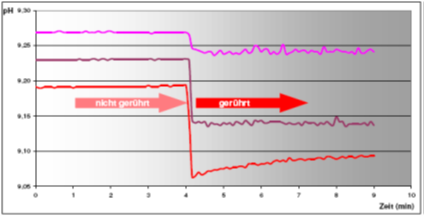
pH electrodes with ceramic diaphragm in the stirring test. |
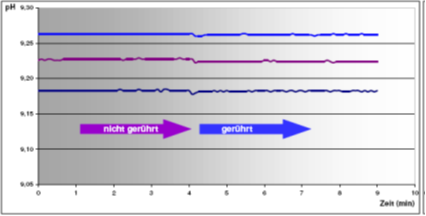
pH electrodes with platinum wire diaphragm in the stirring test. |

A special case are the ground electrodes (or annular gap electrodes), here the user can actively change the outflow of the electrolyte and adapt it to the sample. They can be used in difficult samples such as emulsions or at low or high conductivities.
Ceramic and fiber diaphragms are used for gel electrodes. As a general rule, it should be understood that samples that cause the diaphragm to stick together will also cause the electrode to fail. They are always used when the issue of “low maintenance” is paramount.
Find the right pH electrode for your application:
Low-maintenance pH electrodes
Easy and fast pH measurement, especially in mobile applications? Our low-maintenance pH electrodes are perfect for the task.
Analog low-maintenance pH electrodes
Digital low-maintenance pH electrodes
Precise pH laboratory electrodes
High accuracy with short response time? Precise pH laboratory electrodes with platinum wire diaphragms from WTW® enable efficient and accurate measurement in almost all media.
Analog precision pH electrodes
Digital precision pH electrodes
Special electrodes for pH measurement
Special samples require special electrodes. Small volumes, different properties, unusual composition: our WTW® specialists are real problem solvers.
Special analog electrodes
Digital special electrodes
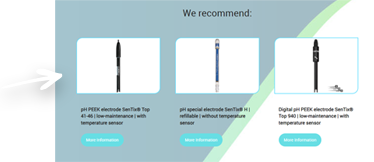
pH Electrodes Selector
Are you wondering whether the pH electrode you have chosen is the right one?
Simply answer 5 questions in our new tool and you will receive the right pH electrode for your application.
Start now!
The pH guide with helpful practical tips
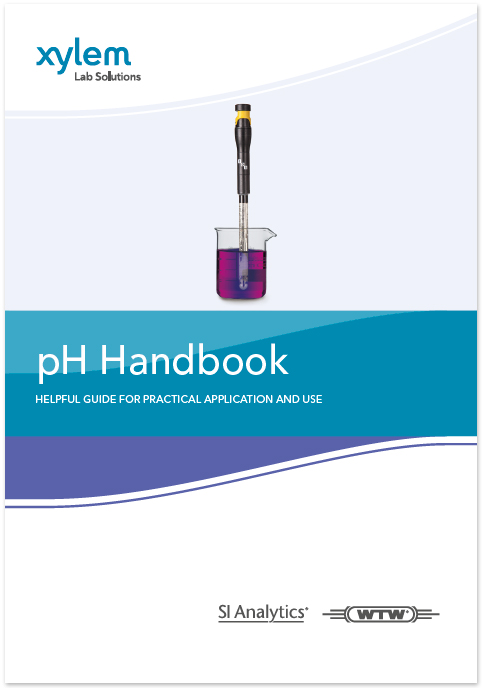 In our pH handbook you will find all our expert knowledge on the subject of pH/redox. Over 100 pages you will learn practical knowledge about pH measurement and pH determination. Numerous illustrations, tables and diagrams provide clear knowledge on how to measure the pH value correctly, calibrate the pH electrode, maintain it, clean it and many other helpful tips and tricks from our experts that will make your everyday work in the laboratory and in the field easier.
In our pH handbook you will find all our expert knowledge on the subject of pH/redox. Over 100 pages you will learn practical knowledge about pH measurement and pH determination. Numerous illustrations, tables and diagrams provide clear knowledge on how to measure the pH value correctly, calibrate the pH electrode, maintain it, clean it and many other helpful tips and tricks from our experts that will make your everyday work in the laboratory and in the field easier.
Download now
For helpful tips within your application area, you can read in our blog articles:
Blog: Operation, care and storage of pH electrodes
Blog: What is the pH value?
Blog: Calibration and adjustment of a pH electrode